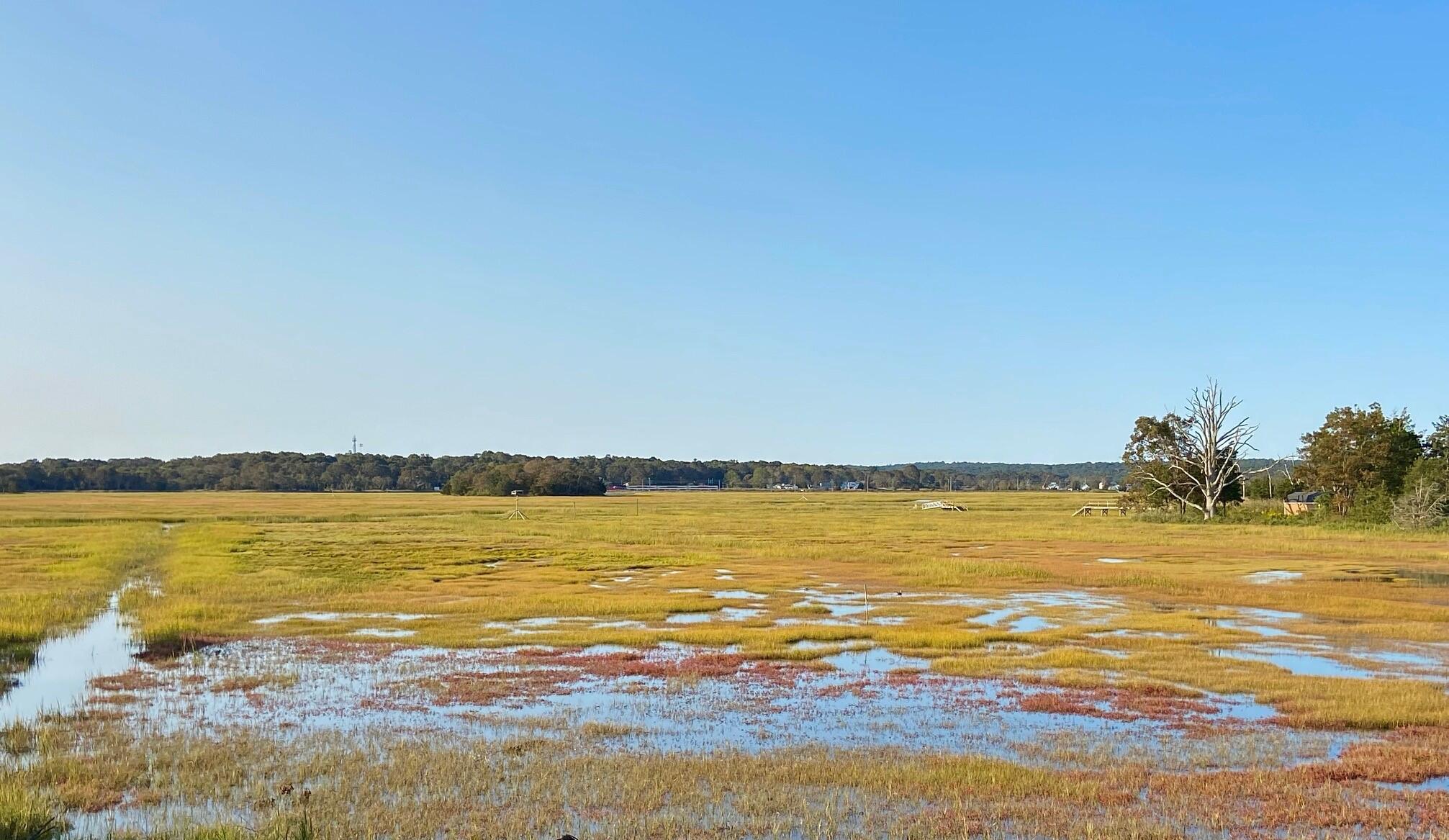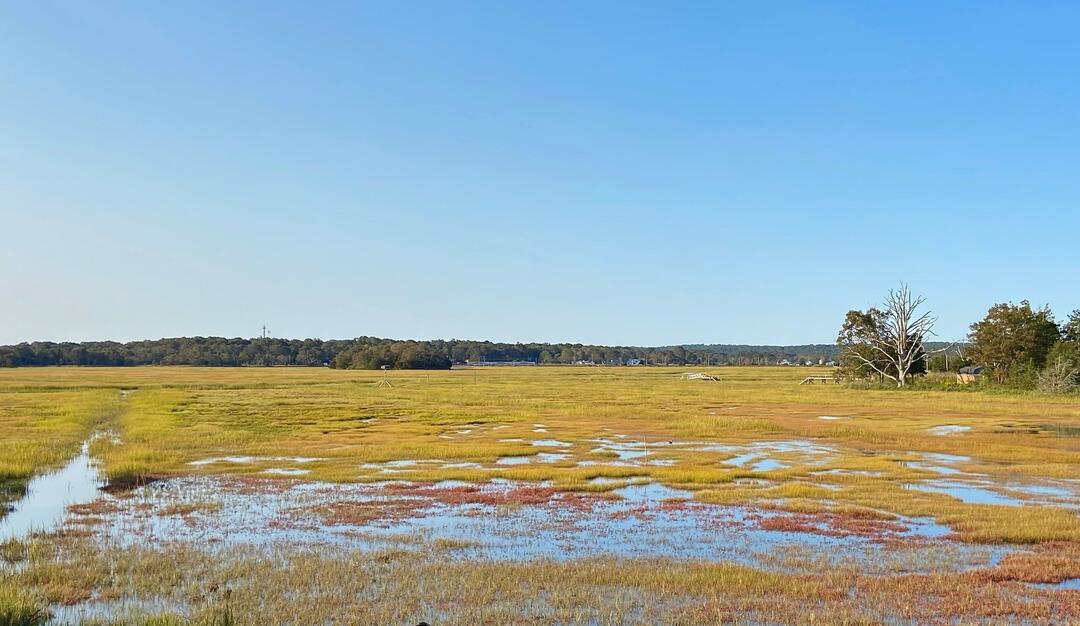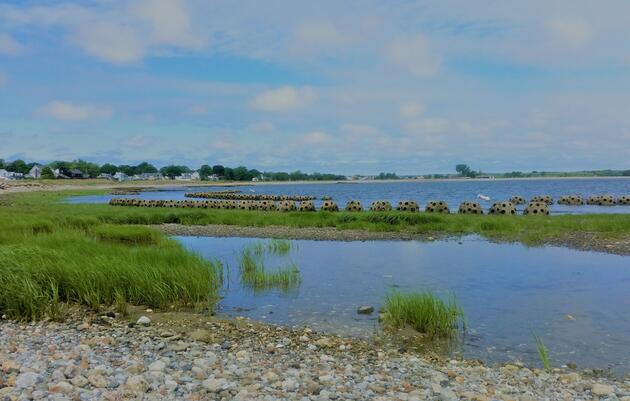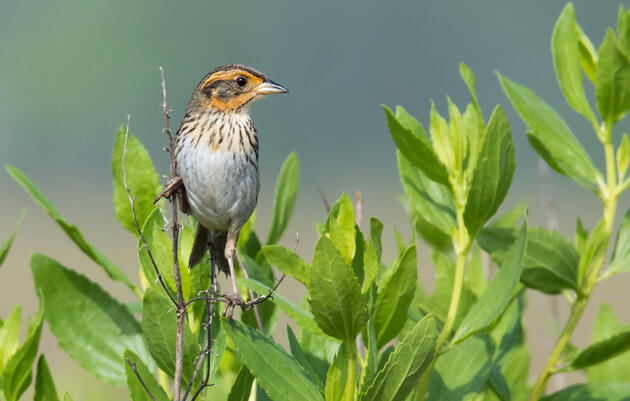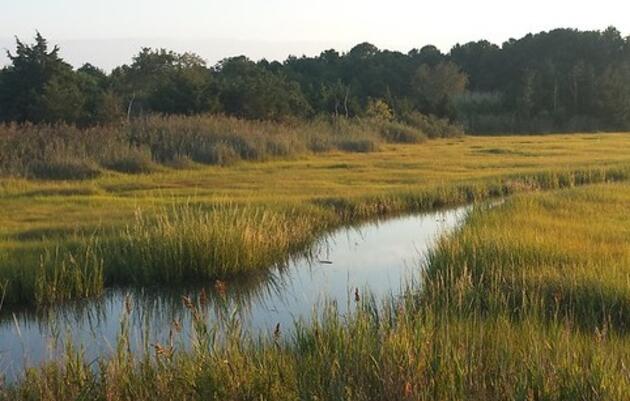Did you know that salt marshes have suffered losses of over 75% between 1900 and 1970 and continue to decline at rates of 0.5 to 3% per year*?
The impacts of these losses are many and growing. Saltmarsh Sparrow populations have declined by over 80%, and may go extinct in our lifetime. Unhealthy marshes will no longer provide important buffers for local communities against major storms. Before it's too late for birds and people, Audubon and partners across the coast are taking action on-the-ground.
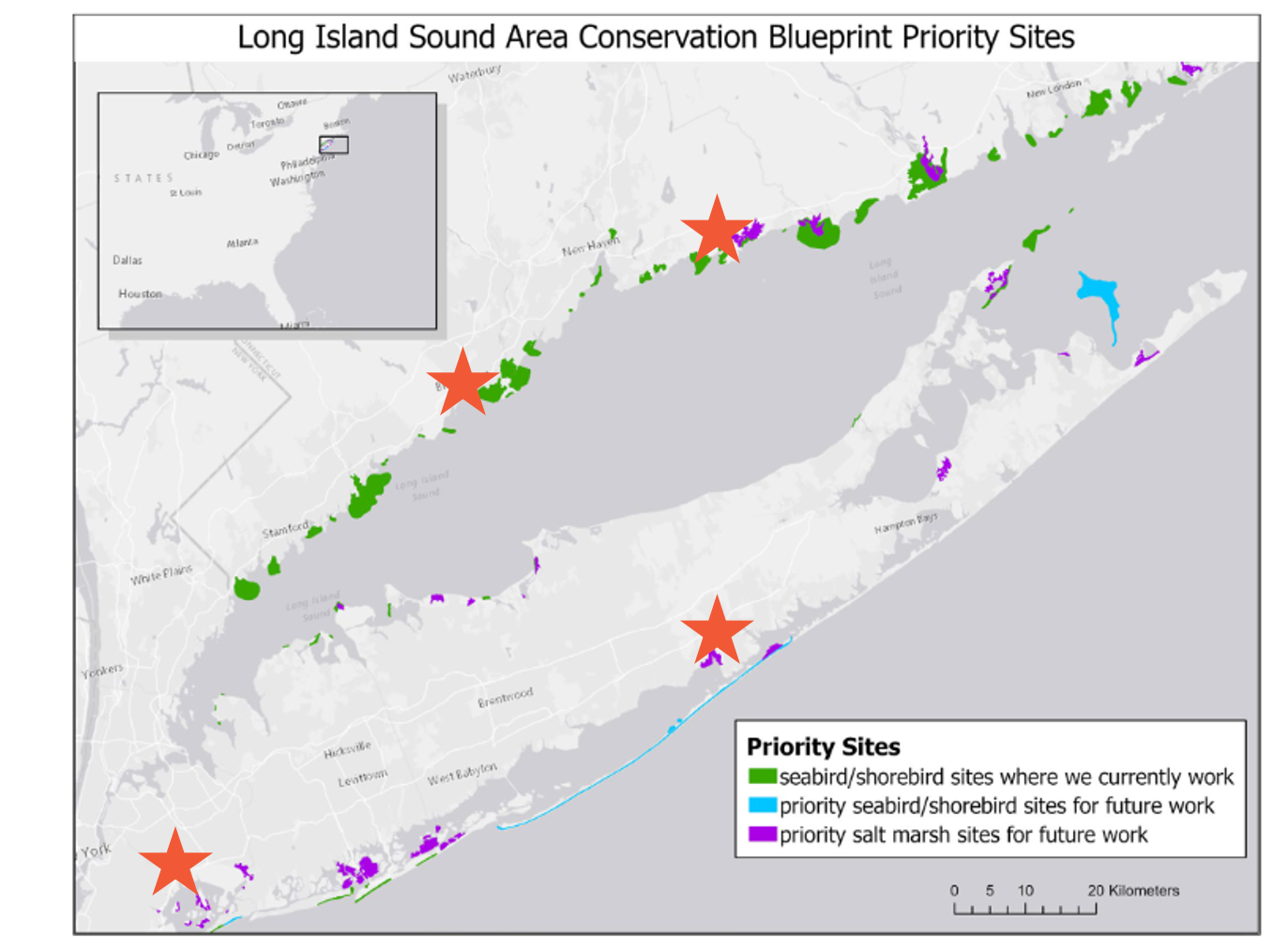
The map above shows the priority areas for saltmarsh restoration and/or enhancement in Connecticut and New York, as identified by the Long Island Sound Area conservation strategy. The stars indicate active work areas. Click here to learn more about projects underway in New York.
GREAT MEADOWS MARSH - Stratford, CT
Great Meadows Marsh (GMM), located in the Stewart B. McKinney National Wildlife Refuge, is one of Connecticut’s largest salt marshes and contains the largest remaining mostly un-ditched marsh in the state. In addition to approximately 225 acres of un-ditched marsh, the Great Meadows Unit includes a barrier beach, tidal wetland, ditched salt marsh, filled wetland, and upland. The area also has several small fresh or brackish ponds, salt pannes, and tidal mud and sand flats. GMM is connected to Long Beach by Lewis Gut, an estuarine embayment fed from several freshwater creeks and the waters of Long Island Sound (LIS) through Bridgeport Harbor.
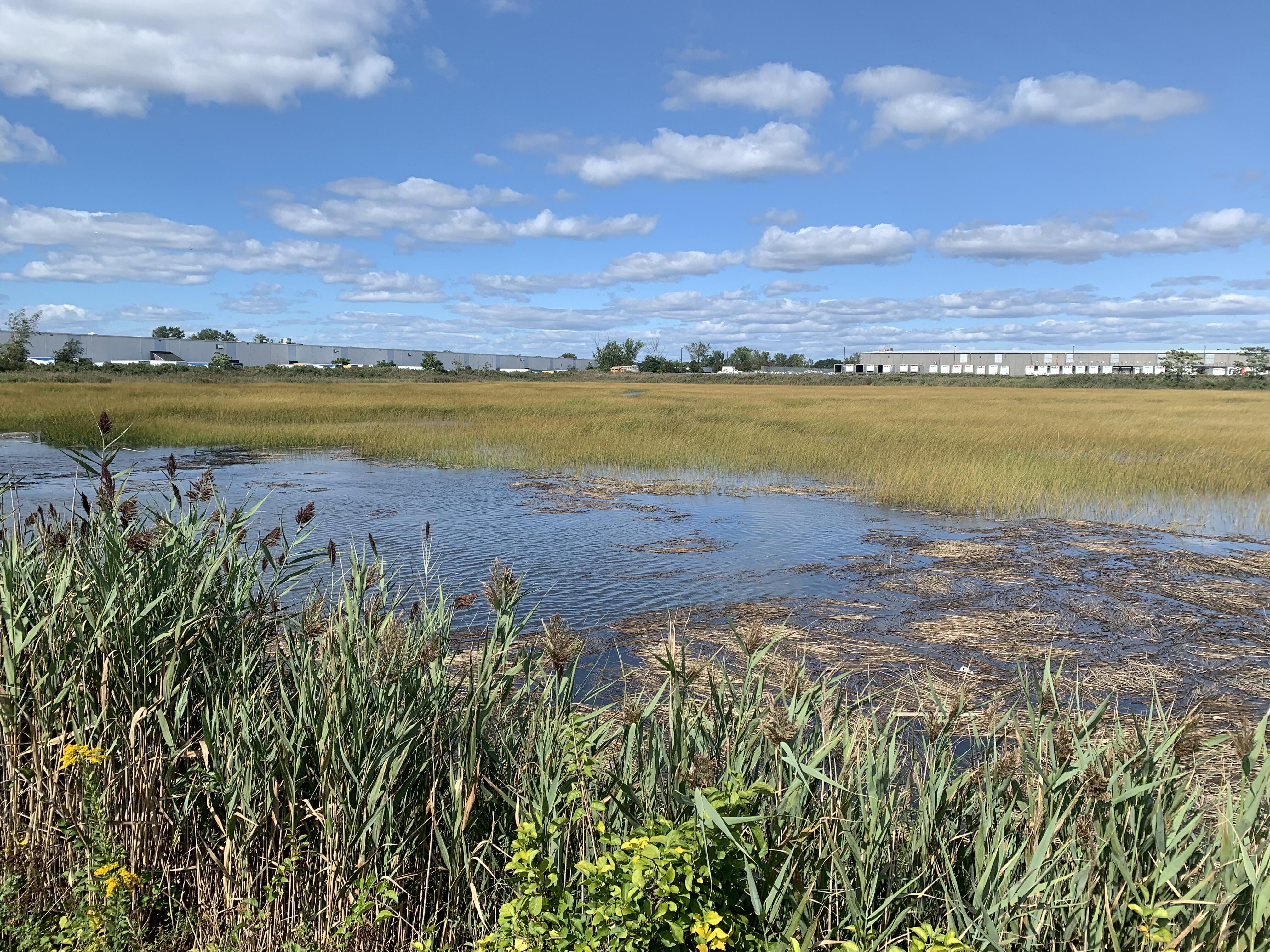
Historically, GMM was a back-barrier salt marsh of more than 1400 acres, but land-use changes since the mid-1800s reduced the marsh to less than 700 acres. Though it once occupied a much larger area, GMM still provides critical habitat for a diversity of wildlife species including rare plant species, several species of finfish, and approximately 270 bird species. The birds utilize GMM for nesting, overwintering, and stopover during migration, including many federal and state species of concern. This includes the Saltmarsh Sparrow, a species that nests exclusively in marshes from Maine to Virginia and is considered one of the most specialized tidal marsh nesting birds globally.
This restoration project will amplify the effects of several community resiliency activities outlined in the Town of Stratford’s 2016 Coastal Resiliency Plan.
Project implementation is expected to be substantially completed during November 2021-April 2022. Work activities including removing invasive plant cover, regrading and reusing dredged fill soils with specific target elevations designed to create conditions to support native plant species, as well as birds such as Saltmarsh Sparrow, while accounting for sea level rise estimates.
Once restoration work activities are completed, a team of scientists will conduct monitoring of the restoration, including essential acres restored, habitat cover and species composition and health collectively and by specific habitats, restored tidal hydrology, and changes in rare plant and animal populations endemic to the site.
Related
Stratford Point Receives 'Best Restored Shore Award'
Saltmarsh, seaside, and Nelson’s sparrows have been spotted in the re-established salt marsh habitat.
A Blueprint for a Healthier Coast in New York and Connecticut
Audubon’s new conservation strategy will create a resilient future for the Long Island Sound area.
Watch: Coastal Resilience Webinar
Sea level rise, salt marsh restoration, and more—hear about the challenges we face and the work Audubon is doing to make our coasts more resilient for birds and people.
How you can help, right now
Get Involved
There are so many great ways you can get involved with Audubon Connecticut and make a difference for both the wildlife and the people who call Connecticut home.
Visit Our Centers
Connect with our nature centers in Greenwich, Sharon, and Southbury. Each unique center offers trails, educational resources, conservation opportunities, and more.
Support Us
Through land stewardship, science, education, and advocacy, Audubon Connecticut works across the state to preserve habitat and protect bird species that are of state, national, and global concern.

